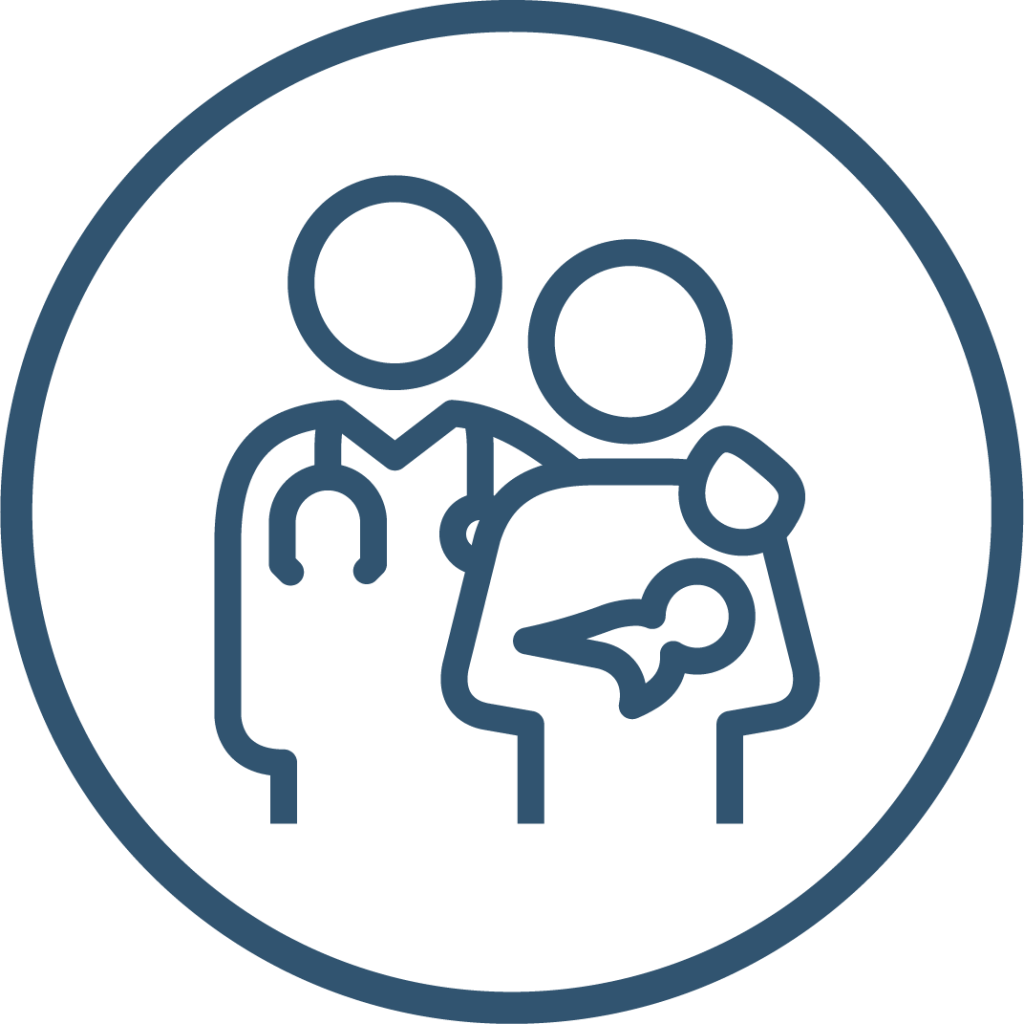WHAT IS GALACTOSEMIA?
Galactosemia is a rare, slowly progressing metabolic disease caused by a genetic inability to break down the sugar galactose.
Galactose is a sugar found in foods, but the human body also naturally produces galactose on its own. People with Galactosemia have mutations or deletions in their DNA that are passed down from family members. The DNA alterations can lead to different subtypes of Galactosemia, such as GALT Deficiency (known as Classic Galactosemia) or GALK Deficiency. Aldose Reductase (AR), an enzyme known to play a role in many diseases including Galactosemia, converts galactose into galactitol, a toxic metabolite that builds up in tissues and organs and can cause long-term disease complications.
Galactose is found in dairy products and certain other foods, but galactose is also naturally produced by the body (endogenously). This means that diet alone cannot prevent the long-term consequences of Galactosemia. A treatment for those living with Galactosemia is needed.

There are about 3,300 individuals with Galactosemia (GALT) in the U.S. and about 3,500 individuals in the EU (GALT + GALK)

Most patients with Galactosemia are under the age of 40, as newborn screening was not widely adopted until the 1980’s

Galactosemia is included as part of routine newborn screening in all 50 US states, and in many European countries, and Galactosemia is identified in about 80-100 new births every year
High Unmet medical Need in Galactosemia Treatment
There are currently no approved therapies for Galactosemia.
Currently, the only method of managing Galactosemia is to keep patients on a strict diet that removes any lactose (another type of sugar) or galactose-containing foods and drinks. In babies, this usually means switching from breast milk or milk-based formula to a low galactose formula, such as soy or elemental formula.
However, galactose is also produced by the body. This means that diet alone does not prevent the long-term consequences of Galactosemia. A treatment for those living with Galactosemia is desperately needed.
Newborn screening for Classic Galactosemia involves a dried blood spot test, where a sample of blood is taken from the heel. The blood is tested for GALT enzyme activity and total levels of galactose. If GALT enzyme activity is very low or completely undetected, or if there are high levels of galactose, the patient may have Classic Galactosemia. A genetic test is performed to confirm the diagnosis.
Newborn screening for Classic Galactosemia involves a dried blood spot test, where a sample of blood is taken from the heel. The blood is tested for GALT enzyme activity and total levels of galactose. If GALT enzyme activity is very low or completely undetected, or if there are high levels of galactose, the patient may have Classic Galactosemia. A genetic test is performed to confirm the diagnosis.
Neurologic (related to the CNS)
- Impaired Motor Skills (fine and gross)
- (Cerebellar) Ataxia
- Dysmetria
- Tremors (Postural or Intentional)
- Impaired Speech and Language Skills
- Verbal Dyspraxia
- Dysarthria
- Dystonia
- Impaired Cognitive Skills
- Seizures
Ophthalmic (related to the eyes)
- Cataracts
Psychiatric
- Learning disabilities
- Behavioral impairments
- Social impairments
- Depression
- Anxiety
Reproductive
- Primary Ovarian Insufficiency (females only)
Metabolic
- Osteopenia or Vitamin D Deficiency
- Slowed or Stunted Growth
Galactosemia is a problem processing galactose, a kind of sugar found in dairy products such as milk, cheese, butter, and other foods.
To understand why this happens, we need to look at metabolic pathways. These are chemical reactions that convert molecules into the body. When everything in the body is working the way it should, galactose is converted into a specific pathway (pathway 1). In this pathway, galactose is converted into a metabolite called Gal-1p. People with Galactosemia are missing an enzyme called GALT, so Gal-1p cannot be processed any further. Instead, Gal-1p is backed up and clogs the pathway, meaning galactose cannot go where it should go. When this happens, galactose overflows into a different pathway (pathway 2) where it should not go.
When galactose travels down pathway 2, it does not know how to properly process the galactose. An enzyme that is not supposed to be involved called Aldose Reductase steps in and converts the galactose. Aldose Reductase changes galactose into toxic galactitol causing harm to the body. Galactitol can cause build up in the blood, tissues and organs including the brain. Finding new ways to block toxic galactitol may help reduce damage to the body.
Our Commitment to Galactosemia Research
Applied Therapeutics is committed to developing a new treatment option for this urgent unmet medical need.
Govorestat is a novel central nervous system (CNS)-penetrant Aldose Reductase Inhibitor (ARI) being developed for the treatment of several rare diseases. Govorestat is a potent and selective agent being developed as an oral therapy for treatment of Galactosemia. Govorestat has received Orphan Medicinal Product Designation from the European Medicines Agency (EMA), and both Orphan Drug and Pediatric Rare Disease designations from the FDA for the treatment of Galactosemia.
HEAR FROM THE PARENTS OF A CHILD WITH CLASSIC GALACTOSEMIA
1.
Demirbas et al., 2018: https://www.sciencedirect.com/science/article/pii/S0026049518300337
2.
Dandamundi et al., 2014:
https://www.ncbi.nlm.nih.gov/pmc/articles/PMC4076144/
3.
Decision Resources Group Epidemiology of Galactosemia Report, June 2020
(Data on File).
4.
Bernstein
and van Calcar., 2015, Nutrition Management of Inherited Metabolic Diseases.
5.
Coelho et al., 2017: https://pubmed.ncbi.nlm.nih.gov/28281081/
6.
Pasquali et al., 2017: https://www.nature.com/articles/gim2017172
7.
NORD Rare Disease Database: https://rarediseases.org/rare-diseases/galactosemia/
8.
Welling et al., 2017: https://www.ncbi.nlm.nih.gov/pmc/articles/PMC5306419/
9.
Berry,
2000: https://www.ncbi.nlm.nih.gov/books/NBK1518/
10.
Hennermann et al., 2011: https://pubmed.ncbi.nlm.nih.gov/21290184/
11.
Fridovich-Keil et al., 2020: https://www.ncbi.nlm.nih.gov/books/NBK258640/
In the patients & caregivers section

